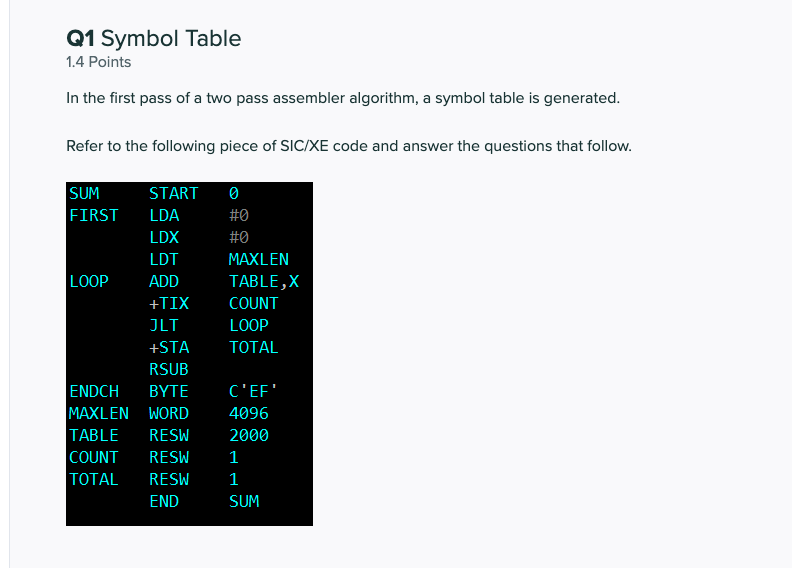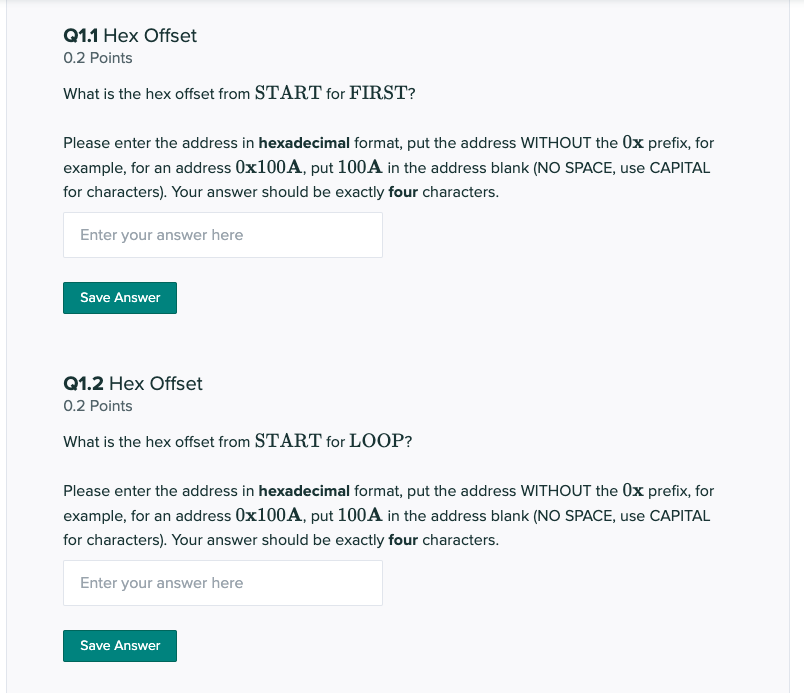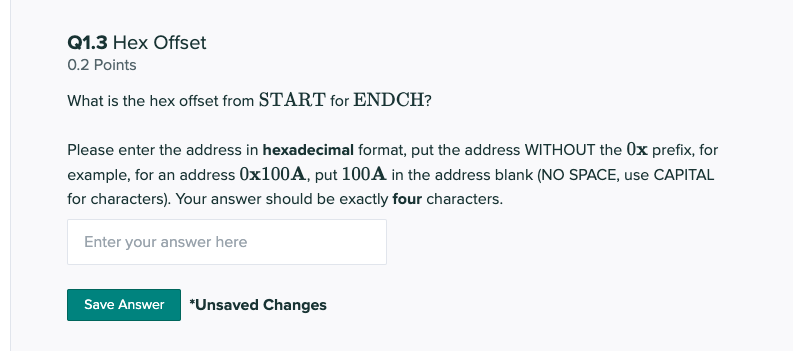Home /
Expert Answers /
Computer Science /
q1-symbol-table-1-4-points-in-the-first-pass-of-a-two-pass-assembler-algorithm-a-symbol-table-is-pa432
(Solved): Q1 Symbol Table 1.4 Points In the first pass of a two pass assembler algorithm, a symbol table is ...
Q1 Symbol Table 1.4 Points In the first pass of a two pass assembler algorithm, a symbol table is generated. Refer to the following piece of \( \mathrm{SIC} / \mathrm{XE} \) code and answer the questions that follow.
What is the hex offset from START for FIRST? Please enter the address in hexadecimal format, put the address WITHOUT the \( 0 \mathbf{x} \) prefix, for example, for an address \( 0 \mathbf{x} 100 \mathbf{A} \), put \( 100 \mathbf{A} \) in the address blank (NO SPACE, use CAPITAL for characters). Your answer should be exactly four characters. Q1.2 Hex Offset \( 0.2 \) Points What is the hex offset from START for LOOP? Please enter the address in hexadecimal format, put the address WITHOUT the \( 0 \mathbf{x} \) prefix, for example, for an address \( 0 \mathbf{x} 100 \mathbf{A} \), put \( 100 \mathbf{A} \) in the address blank (NO SPACE, use CAPITAL for characters). Your answer should be exactly four characters.
Q1.3 Hex Offset \( 0.2 \) Points What is the hex offset from START for \( \mathrm{ENDCH} \) ? Please enter the address in hexadecimal format, put the address WITHOUT the \( 0 \mathbf{x} \) prefix, for example, for an address \( 0 \mathbf{x} 100 \mathbf{A} \), put \( 100 \mathbf{A} \) in the address blank (NO SPACE, use CAPITAL for characters). Your answer should be exactly four characters.
Expert Answer
in SIC/XE each instruction is 3 bytes (24 bits) long. then to get the address of the next instruction, add 3 to the previous instruction address. If t


